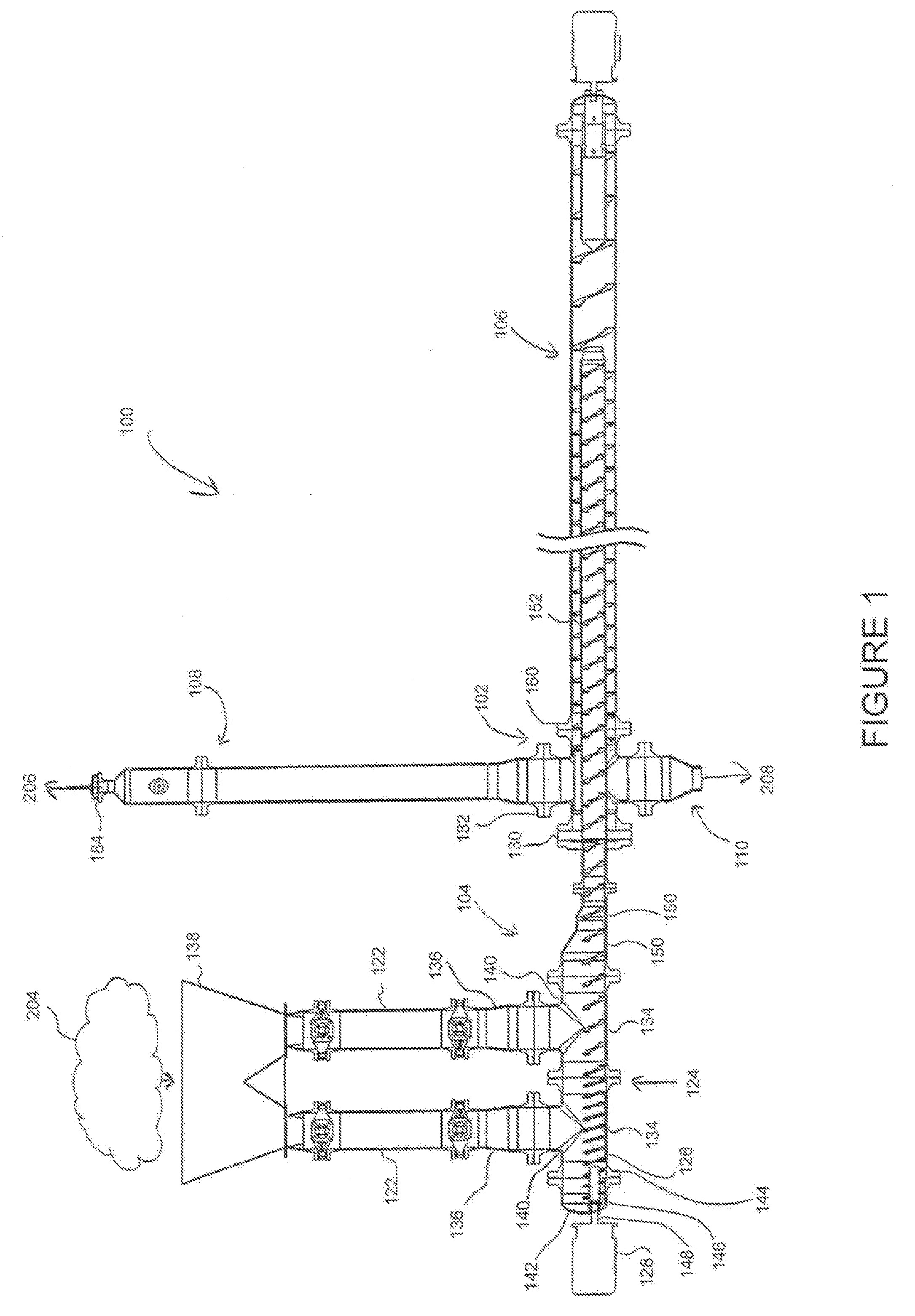Reciprocating reactor and methods for thermal decomposition of carbonaceous feedstock
- Summary
- Abstract
- Description
- Claims
- Application Information
AI Technical Summary
Benefits of technology
Problems solved by technology
Method used
Image
Examples
example 1
[0078]One example of a start-up procedure for a continuous pyrolysis system and process of the present technology is as follows:[0079]1. All airtight connections are closed except for the gas flow control valve 184 of the gas off-take system 108.[0080]2. Biochar is loaded into the continuous pyrolysis system 100 through the feed assembly 124, the amount of biochar being sufficient to fill the outer reactor zone 180.[0081]a. The last portion of biochar loaded is soaked with a small amount of slow-burning accelerant (e.g., diesel fuel). If biochar is left in the reactor from the last run, the slow-burning accelerant can be applied to the incoming biomass only.[0082]b. After stopping loading the biochar, the continuous pyrolysis system 100 continues to convey the biochar through the inner reactor zone 178 and into place in the outer reactor zone 180 with the slow-burning accelerant soaked portion of biochar positioned in the turnaround zone 164.[0083]3. After loading of the bio...
example 2
[0102]One example of a shutdown procedure for a continuous pyrolysis system and process of the present technology is as follows:[0103]1. Feeding of carbonaceous feedstock into the feeder assembly is ceased.[0104]2. The feed auger 126 and return auger 166 are operated until the gases and biochar exit the system.[0105]3. The feed auger126 and return auger 166 are shut off.
[0106]Alternatively, particularly where the expected time offline is short and the reactor does not need to be disassembled:[0107]1. Feeding of carbonaceous feedstock into the feeder assembly is ceased.[0108]2. The feed auger 126 and return auger 166 are operated until the all of the carbonaceous feedstock in the system reaches the outer reactor zone 180.[0109]3. The feed auger 126 and return auger 166 are shut off, and the biochar is allowed to cool to be ready for the next start up.
PUM
 Login to View More
Login to View More Abstract
Description
Claims
Application Information
 Login to View More
Login to View More - R&D
- Intellectual Property
- Life Sciences
- Materials
- Tech Scout
- Unparalleled Data Quality
- Higher Quality Content
- 60% Fewer Hallucinations
Browse by: Latest US Patents, China's latest patents, Technical Efficacy Thesaurus, Application Domain, Technology Topic, Popular Technical Reports.
© 2025 PatSnap. All rights reserved.Legal|Privacy policy|Modern Slavery Act Transparency Statement|Sitemap|About US| Contact US: help@patsnap.com



